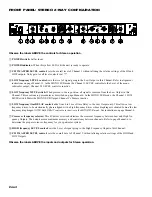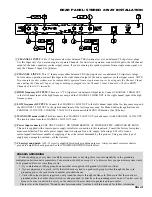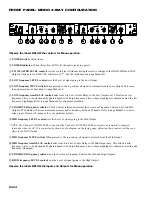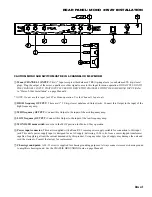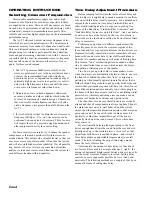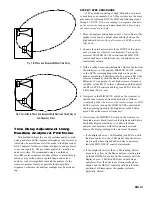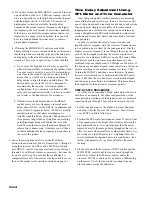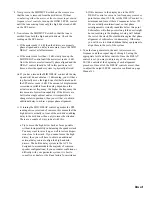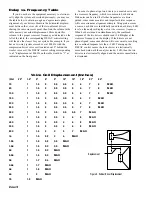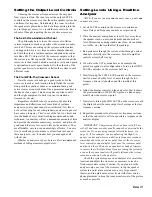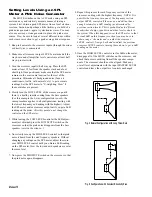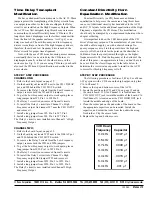
Manual-4
FRONT PANEL: MONO 3-WAY CONFIGURATION
Observe the labels BELOW the controls for Mono operation.
POWER switch: Self-evident.
POWER indicator: When this yellow LED is lit, the unit is ready to operate.
CH 1 MASTER LEVEL control: sets the overall level without altering the relative settings of the HIGH, MID and LOW
Outputs. Unity gain for all LEVEL controls is at “7”. See the instructions on page Manual-11.
LOW frequency LEVEL control: sets the Level of signal going to the Low Output.
LOW frequency MUTE switch: When pressed to the in position, all signal is removed from the Low Output. This eases
tune-up procedure, as described on page Manual-6.
LOW frequency time DELAY control: adds from 0 to 2 ms of time Delay to the Low Output only. This allows a low
frequency driver to be electronically phase-aligned with a high frequency driver whose diaphragm is situated behind the low
frequency diaphragm. Refer to page Manual-6 for alignment procedure.
CROSSOVER frequency selector: This 41-detent selector determines the Crossover Frequency between Low and Mid
Outputs. The detents will assure maximum accuracy and consistency between Channels. Refer to page Manual-6 to deter-
mine proper Crossover Frequency for your particular system.
MID frequency LEVEL control: sets the Level of signal going to the Mid Output.
* NOTE: The Channel 1 HIGH LEVEL control and the Channel 2 MASTER LEVEL control are automatically bypassed
internally when the AC 22 is connected as shown by the diagram on the facing page. Adjusting these controls will have no
effect in the MONO mode.
MID frequency MUTE switch: When pressed to the in position, all signal is removed from the Mid Output.
MID frequency time DELAY control: adds from 0 to 2 ms of time Delay to the Mid Output only. This allows a mid
frequency driver to be electronically phase-aligned with a high frequency driver whose diaphragm is situated behind the mid
frequency diaphragm.
CROSSOVER frequency selector: sets the Crossover Frequency between the Mid and High Outputs.
HIGH frequency LEVEL control: sets the Level of signal going to the High Output.
Observe the labels BELOW the Inputs and Outputs for Mono operation.


